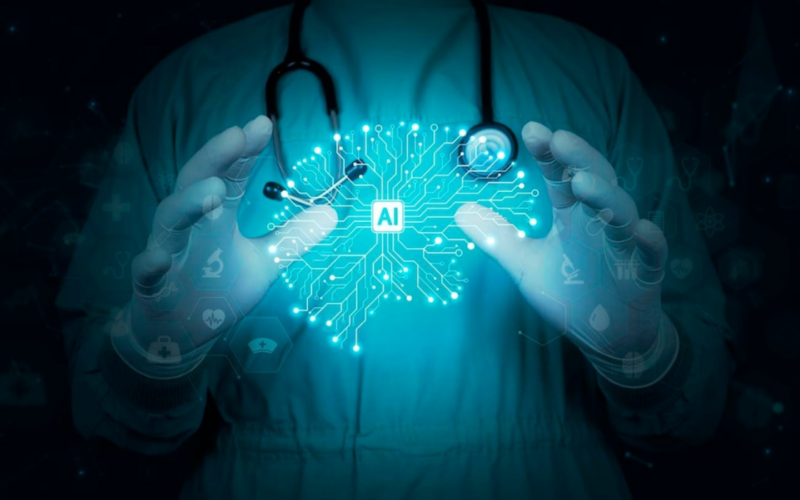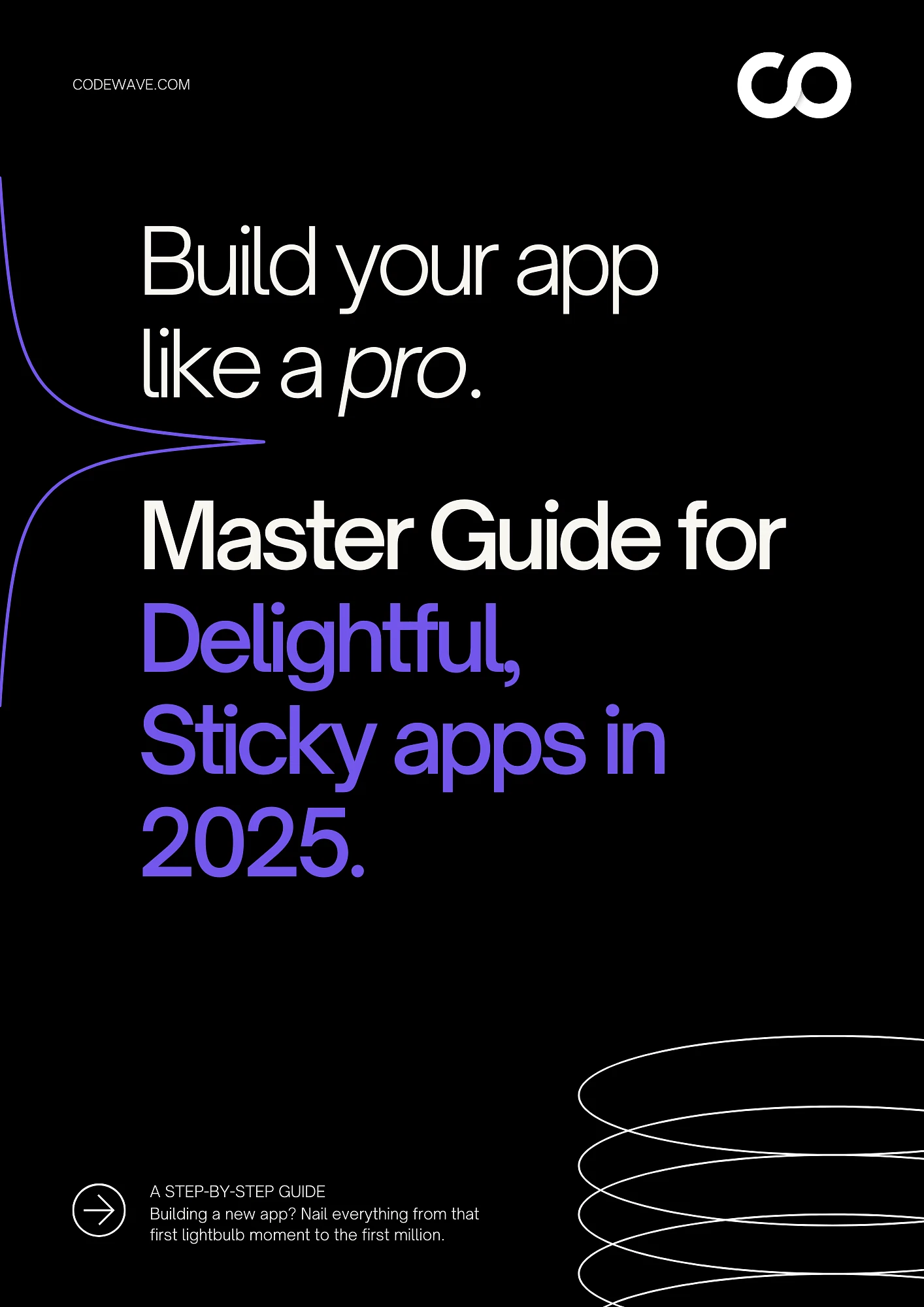Medical AI is no longer a futuristic idea; it’s already changing how doctors diagnose and treat patients. AI-powered diagnostic platforms like Microsoft’s MAI-DxO are now achieving over 85% accuracy, better than the average physician rate in case studies.
Yet, you might still face delays in getting test results, vague treatment plans, or costly trial-and-error approaches. This is where medical AI steps in, turning hours of analysis into seconds and helping create faster, more precise care decisions.
In this article, you’ll see how medical AI works, where it’s making the biggest impact, and why it could be the key to more accurate diagnoses, efficient treatment, and better patient outcomes.
Key Takeaways
- Medical AI is reshaping healthcare by enabling faster diagnoses, personalized treatments, and proactive patient care.
- Key applications include medical imaging, predictive analytics, drug discovery, personalized care plans, virtual assistants, and robotic surgery.
- Ethical considerations like data privacy, bias, and transparency must be addressed to ensure fair, safe adoption.
- Future trends point to autonomous diagnostics, AI-guided gene editing, health twins, nanobot therapies, and emotionally intelligent companions.
- Codewave delivers scalable, secure, and impactful AI healthcare solutions, tailored to real clinical needs.
Understanding AI in Healthcare
FDA data shows that since September 2024, more than 200 AI-enabled medical devices have been officially cleared for use in the US, most for radiology and image analysis. That’s not just a tech milestone; it’s proof that AI is now a trusted part of real-life healthcare.
In simpler terms, medical AI is about teaching machines to “think” in ways that support doctors, improve accuracy, and speed up decision-making without replacing the human touch.
To understand how it works, it helps to look at the core AI technologies powering these tools:
Learns from large sets of patient data, such as lab results, lifestyle factors, and treatment history, to predict outcomes. In healthcare, it’s used for forecasting disease progression, identifying high-risk patients, and recommending preventive measures.
2. Deep Learning (DL):
Uses multi-layered neural networks to recognize highly complex patterns in data. In medicine, it powers image-based diagnostics like spotting early-stage cancers in mammograms or detecting heart abnormalities in echocardiograms.
3. Natural Language Processing (NLP):
Reads and understands unstructured text, such as doctors’ notes, discharge summaries, or research studies. In healthcare, it helps extract key patient details, flag potential risks, and keep records more accurate and accessible.
4. Computer Vision:
Interprets visual data from medical images, like X-rays, MRIs, and CT scans, with precision that can match or exceed human specialists. It’s vital for early diagnosis and treatment planning in fields like radiology and pathology.
5. Generative AI:
Produces realistic medical images, designs new drug molecules, or simulates treatment effects in virtual trials. This speeds up research, aids in training medical staff, and allows safe testing of scenarios before real-world application.
Struggling to implement AI in healthcare? Explore Codewave’s AI/ML Development services to create advanced, data-driven solutions that improve patient care and streamline operations. Start using AI to enhance your healthcare outcomes today!
Now that you know the tech behind it, let’s see how AI is actually being used in medicine.
Key Applications of AI in Medicine
Global leaders are prioritizing responsible medical AI at United Nations and World Health Organization summits, emphasizing safety, transparency, and equity for all patients. As AI becomes more common in hospitals, clinics, and research labs, it’s not just about what the technology can do, it’s about how it’s used.
Here are some of the most important ways it’s being applied today.
1. Medical Imaging & Diagnostics
Medical imaging AI interprets scans like X-rays, MRIs, CT scans, and pathology slides to detect diseases earlier and more accurately. It’s used in radiology, pathology, and dermatology to identify issues such as cancer, fractures, and skin disorders at stages when treatment is most effective.
How It Works:
- Uses computer vision and deep learning trained on large datasets of labeled medical images.
- Recognizes subtle patterns, such as tiny tumors or microfractures, that may be hard to detect visually.
- Processes new images in seconds and flags areas for a doctor’s review, speeding up diagnosis.
2. Predictive Analytics
Predictive analytics in healthcare uses AI to forecast future medical events by analyzing patterns in patient and population data. It helps identify individuals at risk of developing certain conditions and supports hospitals in planning resources more effectively.
How It Works:
- Collects diverse medical data, patient histories, diagnostic results, genetic profiles, and lifestyle information.
- Applies machine learning algorithms to find hidden patterns linked to disease development or complications.
- Generates risk scores for individual patients, flagging those who may need early intervention.
- Models future patient inflow based on epidemiological trends, seasonal illness patterns, and local health data.
- Updates forecasts in real time as new clinical data is added, improving decision-making for both treatment and hospital resource allocation.
Struggling with turning healthcare data into actionable insights? Explore Codewave’s Healthcare Data Analytics Solutions to transform your data into smarter, data-driven decisions. Start optimizing patient care today!
3. Drug Discovery & Development
Drug discovery and development AI accelerates the process of finding and testing new medicines. By simulating how potential drug compounds will behave in the body it reduces the time and cost of bringing effective treatments to market.
How It Works:
- Analyzes massive datasets of chemical structures, biological interactions, and clinical trial results.
- Uses machine learning to identify promising molecules with the highest potential for success.
- Simulates drug–target interactions to predict safety, effectiveness, and possible side effects.
- Prioritizes compounds for laboratory testing, cutting down on unnecessary experiments.
- Optimizes clinical trial design by predicting patient responses and selecting the best candidate groups.
4. Personalized Treatment Plans
Personalized treatment plans use medical AI to tailor therapies to each patient’s unique profile, considering factors like genetics, medical history, and lifestyle. This approach aims to improve effectiveness and reduce trial-and-error in care.
How It Works:
- Combines data from electronic health records, genetic testing, and diagnostic results.
- Uses AI algorithms to match patients with treatments proven effective for similar profiles.
- Analyzes genetic variations to predict drug metabolism and potential side effects.
- Continuously refines treatment plans using patient progress data and follow-up results.
- Supports precision medicine strategies, ensuring therapies target the right condition in the right way for each patient.
5. Virtual Assistants & Patient Engagement
In medical AI, virtual assistants are tools that help patients access information, manage their health, and stay connected with healthcare providers. They improve engagement by making support available anytime, anywhere.
How It Works:
- Uses AI-powered chatbots to answer health-related questions and guide patients to the right level of care.
- Employs symptom checkers that analyze patient-reported data and suggest possible conditions or next steps.
- Sends automated reminders for medication schedules, follow-up visits, or lifestyle changes.
- Integrates with patient health records to provide personalized advice and track progress over time.
- Offers multilingual and 24/7 support, improving accessibility for diverse patient groups.
6. Robotic Surgery & Assisted Procedures
In medical AI, robotic surgery combines advanced with intelligent algorithms to assist surgeons in performing procedures with greater precision, control, and safety.
How It Works:
- Uses AI-driven motion control to translate a surgeon’s hand movements into highly precise actions.
- Provides real-time imaging and analytics to guide surgical decisions during the procedure.
- Adjusts instrument movement to account for natural hand tremors, reducing the risk of errors.
- Analyzes patient-specific data to plan the optimal surgical approach before the operation.
The promise of medical AI is undeniable, but its success depends on how well we address the risks and responsibilities that come with it.
Challenges and Ethical Considerations
As medical AI becomes more integrated into healthcare, it brings not only opportunities but also complex challenges that can’t be ignored. Algorithmic bias is so prevalent that some AI tools diagnose white patients more accurately than Black patients, reflecting inequities in their training data.
But for medical AI to truly help patients, these challenges need clear and practical solutions.
1. Data Privacy and Security
Sensitive patient data can be exposed or misused if systems are not properly secured.
Fix: Use strong encryption, multi-factor authentication, and strict access controls. Comply with privacy laws like HIPAA and GDPR to safeguard information.
2. Algorithmic Bias
Some AI tools perform better for certain demographic groups, such as diagnosing white patients more accurately than Black patients, due to skewed training data.
Fix: Train models on diverse, representative datasets and run regular bias audits to ensure equitable performance.
3. Transparency and Explainability
Many AI systems operate as “black boxes,” making it hard for doctors and patients to understand why a decision was made.
Fix: Develop explainable AI models that clearly show the reasoning behind each recommendation.
4. Regulatory Compliance
Without proper oversight, AI tools may fail to meet safety and efficacy standards before being used in patient care.
Fix: Follow recognized approval processes, perform rigorous validation studies, and maintain regular system updates in line with evolving regulations.
5. Patient Consent and Trust
Patients may feel uneasy or unaware of how medical AI is influencing their diagnosis or treatment.
Fix: Clearly communicate AI’s role in their care, seek informed consent, and provide options to opt out.
6. Integration with Clinical Workflow
Poorly integrated AI tools can disrupt existing healthcare routines, adding more work instead of reducing it.
Fix: Design AI systems that fit seamlessly into current workflows, supporting medical staff without creating unnecessary complexity.
Tackling these challenges not only makes medical AI safer today but also shapes the trends that will define its role in healthcare tomorrow.
AI Trends in Healthcare
From AI models that predict health risks years in advance to tools that personalize treatments down to the genetic level, the field is evolving rapidly. New developments are focusing on making AI more explainable, integrating it with wearable tech, and expanding access in underserved regions.
Here’s a look at the key medical AI trends set to influence healthcare in the coming years.
Fully Autonomous Diagnostics
Fully autonomous diagnostics refers to AI systems capable of delivering complete, accurate diagnoses for certain conditions without human review. These systems combine advanced imaging analysis, patient history processing, and predictive modeling to reach conclusions independently.
Why does it matter in healthcare?
- Reduces diagnostic wait times from days to minutes.
- Expands access to quality diagnostics in rural and underserved areas.
- Frees up specialists to handle complex or urgent cases.
- Enables earlier detection and treatment, improving patient outcomes.
Example: A review of multiple studies involving over 67,000 evaluations found health care practitioners achieved approximately 75% sensitivity and 81.5% specificity without AI, which improved to about 81.1% sensitivity and 86.1% specificity with AI assistance.
AI-Driven Preventive Gene Editing
AI-driven preventive gene editing uses advanced algorithms to identify harmful genetic mutations early and guide precise gene-editing tools, like CRISPR, to correct them before diseases develop. This shifts healthcare from reactive treatment to true genetic-level prevention.
Why does it matter in healthcare?
- Could eliminate hereditary diseases from family bloodlines.
- Reduces the lifetime burden of chronic illnesses linked to genetic defects.
- Enables highly targeted interventions with minimal off-target effects.
- Moves medicine toward prevention rather than long-term disease management.
Example: A 2024 study published in Nature Biotechnology demonstrated an AI-guided CRISPR system that successfully corrected a mutation causing hypertrophic cardiomyopathy in lab-grown human heart cells. This shows the potential for preventing the disease before symptoms appear.
Continuous AI Health Twins
Continuous AI health twins are real-time digital replicas of a patient’s body, built and updated using data from wearables, medical scans, lab results, and genetic profiles. They allow doctors and AI systems to simulate how a person’s body might respond to different treatments or lifestyle changes before applying them in real life.
Why does it matter in healthcare?
- Enables personalized treatment simulations without risking patient safety.
- Helps predict how a disease might progress and adjust care plans in advance.
- Reduces trial-and-error medicine by testing multiple scenarios virtually.
- Supports ongoing monitoring for chronic conditions with real-time updates.
Example: The collaboration between Dassault Systèmes and the US Food and Drug Administration (FDA) in the SIMULIA Living Heart project uses a detailed AI-powered digital twin of the human heart.
It simulates disease progression and tests potential treatments before they’re applied to real patients.
Nanobot-AI Synergy for Targeted Therapies
Nanobot-AI synergy combines microscopic robots with intelligent algorithms to deliver drugs or perform repairs directly at the affected site inside the body. AI guides these nanobots in navigation, targeting, and precision dosing to maximize treatment impact.
Why It Matters in Healthcare:
- Delivers medication directly to diseased cells, reducing side effects.
- Allows highly precise surgeries or repairs at the cellular level.
- Improves treatment effectiveness for hard-to-reach areas like the brain or deep tissues.
- Enables real-time monitoring of therapy progress inside the body.
Example:
Future concepts envision AI-guided nanobots patrolling the bloodstream continuously, detecting early signs of disease, repairing damaged cells, and administering preventive treatments, all before symptoms even appear.
Emotionally Intelligent AI Care Companions
Emotionally intelligent AI care companions are advanced medical AI assistants that can detect, interpret, and respond to a patient’s emotional state in real time. They combine speech analysis, facial recognition, and behavioral cues to offer support that addresses both physical and mental health needs.
Why It Matters in Healthcare:
- Detects early signs of anxiety, depression, or emotional distress.
- Provides tailored mental health interventions alongside physical care.
- Strengthens patient engagement and trust in ongoing treatment.
- Alerts healthcare providers to urgent emotional or psychological needs.
Example:
Future models could integrate with wearable devices to monitor voice tone, heart rate variability, and facial expressions, enabling them to offer empathetic conversation, mood-based treatment reminders, and timely alerts to care teams when emotional well-being declines.
Discover the powerful potential of generative AI in healthcare and how its innovative use cases are transforming patient care, diagnostics, and medical research.
Medical AI is reshaping care, from faster diagnoses to truly personalized treatments. The next step is ensuring these advances reach everyone, making healthcare smarter, fairer, and more human.
Why Choose Codewave for AI in Healthcare?
When your healthcare organization is ready to adopt AI, you need more than just an off-the-shelf tool. At Codewave, we help you go beyond generic solutions by turning your vision into AI-powered healthcare systems that are accurate, ethical, and patient-focused.
Our medical AI frameworks combine advanced machine learning, real-time clinical data integration, and intuitive design to create solutions for diagnostics, predictive care, and patient engagement.
Curious to see how Codewave’s AI in healthcare solutions can make a measurable impact? Explore our portfolio to see how we’ve helped providers like yours deliver smarter, faster, and more personalized care.
What You Get with Codewave’s AI in Healthcare Solutions
- 60% Improvement in Efficiency: Streamlines clinical workflows for faster, more accurate care delivery.
- 3x Faster Deployment: Brings AI solutions from concept to implementation in record time.
- Save Up to 3 Weeks Monthly: Automates routine tasks so healthcare teams can focus on patients.
- 25% Lower Costs: Uses smart automation to reduce development expenses without compromising quality.
Our Services Include:
- AI Strategy Consultation: We evaluate your current healthcare vision and create a tailored AI roadmap that aligns with your clinical goals, ensuring scalability and long-term impact.
- AI Solution Design & Development: From concept to deployment, we build AI-driven healthcare tools for diagnostics, predictive care, and patient engagement.
- Integration with Clinical Systems: We connect AI solutions with EHRs, imaging platforms, and other medical systems for seamless, real-time data flow.
- Interactive Dashboards & Analytics: We deliver intuitive dashboards that turn AI insights into clear actions, helping providers track performance and make faster, evidence-based decisions.
Curious to see what your data is really capable of? Book a session with Codewave’s experts and discover how we can turn your data into real results.
FAQs
Q. How can smaller clinics or rural hospitals start using medical AI without huge upfront investments?
A. Smaller clinics and rural hospitals can begin by adopting cloud-based medical AI solutions, which require minimal hardware investment and can be scaled gradually. These platforms often operate on a subscription basis, allowing facilities to test capabilities like diagnostic assistance or predictive analytics without committing to full-scale infrastructure upgrades. Partnerships with AI vendors offering pilot programs can also make adoption more affordable and low-risk.
Q. What’s the best way to ensure AI recommendations don’t conflict with a doctor’s clinical judgment?
A. The safest approach is to use AI as a decision-support tool rather than a final authority. Medical AI outputs should be presented alongside evidence, probabilities, and context, so doctors can validate or override suggestions. Hospitals can also implement cross-verification processes, where AI results are reviewed in multi-disciplinary team meetings before being applied to patient care plans.
Q. Will medical AI replace doctors in the future?
A. Medical AI is designed to support, not replace, human expertise. It handles data-heavy tasks like analyzing scans or predicting disease risks, freeing doctors to focus on complex cases and patient interaction. While AI can automate routine work, the empathy, critical thinking, and nuanced judgment of healthcare professionals remain irreplaceable in delivering safe, patient-centered care.
Q. What are the hidden costs of implementing medical AI?
A. Beyond licensing and deployment fees, hidden costs can include staff training, integration with existing systems, data migration, and ongoing maintenance. There may also be expenses for cybersecurity measures, regulatory compliance, and periodic model retraining. Planning for these factors upfront helps avoid budget overruns and ensures the AI investment delivers consistent long-term value.
Q. Can AI help address the shortage of healthcare professionals?
A. Yes. While it can’t replace human caregivers, medical AI can absorb repetitive and time-consuming tasks like paperwork, scheduling, and basic diagnostics. This gives healthcare workers more time for direct patient care and critical decision-making. In resource-limited settings, AI can also extend the reach of specialists through telemedicine and remote diagnostic support.
Q. How can medical AI improve access to quality care in remote areas?
A. Medical AI can bridge the gap for patients in rural or underserved regions by enabling remote diagnostics, telemedicine consultations, and AI-assisted triage. These tools allow local clinics to deliver specialist-level insights without requiring patients to travel long distances. By providing timely, accurate assessments, medical AI ensures more people receive the right care when they need it most.
Codewave is a UX first design thinking & digital transformation services company, designing & engineering innovative mobile apps, cloud, & edge solutions.







